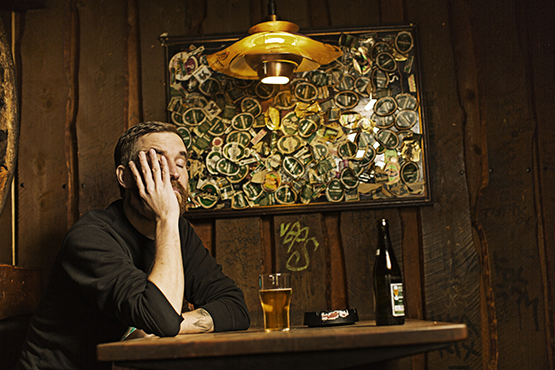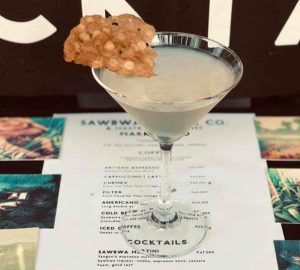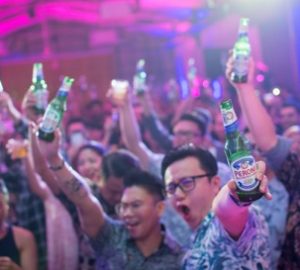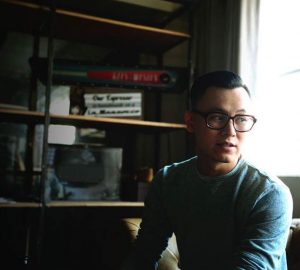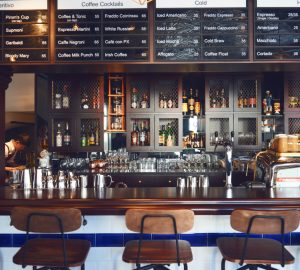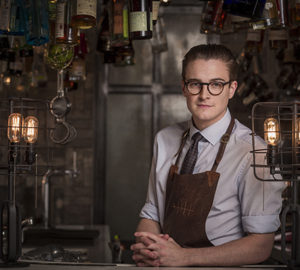Danish co-founder of cult craft beer brand Mikkeller on why he wants to open a bar in Nepal. By Alexander Barlow.
DRiNK: You’re a so-called “gypsy brewer”. What does that mean, effectively?
Mikkel Borg Bergs (MBB): Well, I established my own brand, Mikkeller, and, to make my beer, I rent space in a brewery – either we ask them to brew it, or we brew it ourselves. It’s kind of like, say, a Danish clothing designer, he might go with his designs to a factory in China and ask them to manufacture his clothes. We do the same thing.
DRiNK: You devise all the recipes?
MBB: Right, yes. I take ideas from different sources. Eating, talking to chefs, travelling, tasting stuff from other countries, drinking other beers. Sometimes I’ll drink a certain style of beer from another brewery, I can taste the raw materials in the beer and think, “Right, maybe I should do something similar but raise the caramel malt here, or change this, or that”.
DRiNK: Just like a list of ingredients for a certain dish.
MBB: Yeah, I take the recipe to the brewer and have them source the ingredients, create the beer. I’ve done it so many times now, it just makes sense, based on what I know works in other recipes I’ve created. Usually, I’ll start with a specific flavour in mind. Maybe I’ll be in a restaurant and think, “I want to create a beer that complements this flavour.” And, in order to do that, it’d need to be salty, or sweet, maybe. Recently, I created a series of beers with a Danish chef [Jakob Mielcke] called MAD, based on the five taste sensations: sweet, salt, bitter, sour and umami. For sweet, we used popcorn, for its sweet, fatty taste; for umami, we used a seaweed called søl, from Iceland; for salty, we used salted umeshu plums from Japan.
DRiNK: It’s not always easy to produce a flavoured beer without it seeming a bit like a kind of, well, gimmick.
MBB: Yes, the hardest thing, and the most important thing, is that it still tastes like beer. You need balance, it still needs to be drinkable. A brewer in Denmark once did a beer with asparagus and carrot – it only tasted like those ingredients. And, to me, I don’t see a reason behind that. Similarly, if we do a beer with, say, chilli, you need nuance, I don’t want any flavour to be too obvious.
DRiNK: Gypsy brewers have attracted a fair amount of flack in the past from other brewers, even drinkers. Is that changing?
MBB: Yes, I think in ten years, it won’t even be a topic of conversation. Resistance to the gypsy model is slowly dying out. But, back in the 2006, pretty much when we started, we won this award, something like best brewery in Denmark or something. Shortly after, I got a phone call from a group of brewers who were really, really upset that I got this award because I didn’t have my own brewery.
DRiNK: Are they still pissed about it?
MBB: [Laughs] No, some of them are gypsy brewers now. But, to be honest, I can understand why people don’t like “contract brewers” – a company goes into a brewery, they ask for the cheapest possible production, put their label on it, sell it some place, and the only thing they care about is marketing. We’re pretty much the opposite to that. I brew at Nøgne O in Norway – that’s pretty much the most expensive place in the world to produce beer. But I do it anyway because I know I can make the best beer possible.
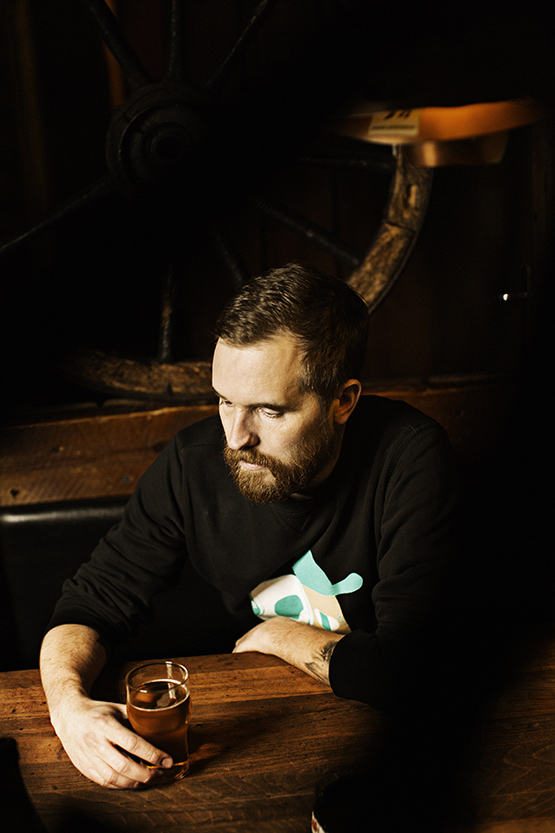
DRiNK: You’ve made beers all over Europe. How do you select the breweries you’ve worked with?
MBB: Simply based on quality and what I think they can do. We brew a lot of beers at De Proef Brouwerij, near Ghent, in Belgium, and, in my opinion, it’s one of the best breweries in the world. When I ask for something I get exactly what I want. They’re so skilled in what they do I can come up with crazy recipes, stuff no one else could do, and they work.
DRiNK: Are there any breweries you still want to work with?
MBB: For sure. I don’t think it’s ever going to happen but Orval and De Doulle, both in Belgium – that would be a dream.。
DRiNK: Is there any ever resistance to your ideas?
MBB: In the beginning, yes. I would present a recipe and they’d say, “No, you can’t do that – it’s not possible.” For example, barrel ageing. When I started working with De Proef Brouwerij in 2008, no one was barrel-ageing beers, especially in Belgium. So the first time I asked them they said they couldn’t do it – instead, they came up with the idea of putting wood chips in the beer. And I said, “No, that’s not what I want – I want the oxidation, the age from the barrel.” So I kept fighting and, today, they have a whole building filled with my barrels. There’s much less resistance to new ideas now.
DRiNK: How have Mikkeller beers changed since the brand’s inception?
MBB: In the beginning, like most brewers, it was all about being extreme – the highest alcohol, who could do the most hops. But it’s matured – we still make those kind of beers but I think we do a greater number of beers that aren’t necessarily that… difficult. The thing is, you get these reviewers – sites that give ratings to beers. And young brewers, at least, tend to cater to these reviewers because they get good ratings; they do styles that appeal to these sites, often big, strong, fat black beers. They tend to stay away from more drinkable styles – pilsners, for example.
DRiNK: Session beers.
MBB: Exactly. Now, in many ways, you are more extreme by being less extreme. For me, doing a 0.3 per cent beer that actually tastes really good is a lot more extreme than doing a 15 per cent imperial stout because, really, anybody can do that. Doing a really, really flavourful 4.5 per cent pilsner, drinkable, refreshing, that’s a lot harder.
DRiNK: Do you consciously try to subvert trends?
MBB: Moving towards session beers is something that happened gradually. That said, I always try to do things that other brewers are not doing, or can’t do. Like, when I started working on no-alcohol beers, no other craft brewer has seriously considered that before. For me, it was really interesting to try to create the first craft non-alcohol beer that actually tasted really good.
DRiNK: Is it popular?
MBB: Yeah, because it actually tastes like beer. For me, the perfect beer would be without alcohol with the flavour of a normal beer. Then you could drink it all the time, whenever. I never drink strong beer. If I open an imperial stout, even the best imperial stout in the world, after two sips, that’s it, I’m done.
DRiNK: You opened a Mikkeller bar in Bangkok. Are there any plans to roll out in other cities, maybe in Shanghai?
MBB: Yes, we were actually talking about opening a place in Shanghai – I’d love to do that. We like to open in places that aren’t so… obvious. Bangkok, for example, that’s not an obvious place to open because they don’t have a particularly strong craft beer market. We also opened in San Francisco – and I love it, it’s great, but, you know, in a way, it’s almost too easy. We sell a lot of beer and everyone raves about it, which is nice, but I think it’s more interesting to do something where you can actually change things – we like to open in markets where we can make a difference. In San Francisco, we’re not changing anything, we’re another cherry on the pie. In Bangkok, we’re actually making a difference, I think our bar will be the leader in changing opinion about craft beer. And I’d love to do that in other places. Nepal, maybe, or Laos, Africa…
DRiNK: What about other plans for this year?
MBB: We’re opening our first brewpub in Copenhagen. So, in fact, we’re not actually going to be a 100 per cent gypsy as of later this year. We’ll have our own production.
DRiNK: Do you think you’ll ever be a 100 per cent self-sufficient label?
MBB: Maybe, it’s hard to say. I’d prefer to always be a gypsy brewer. But as the company grows, as production grows, as demand increases, it’s actually getting harder and harder to produce our beers. As more gypsy brewers enter the market, demand for space increases, so it gets harder to find the spare capacity to brew the beer. I’d say in ten years I wouldn’t be surprised if we had our own brewery – but, for now, I’m happy doing what we’re doing in the way we’re doing it.


